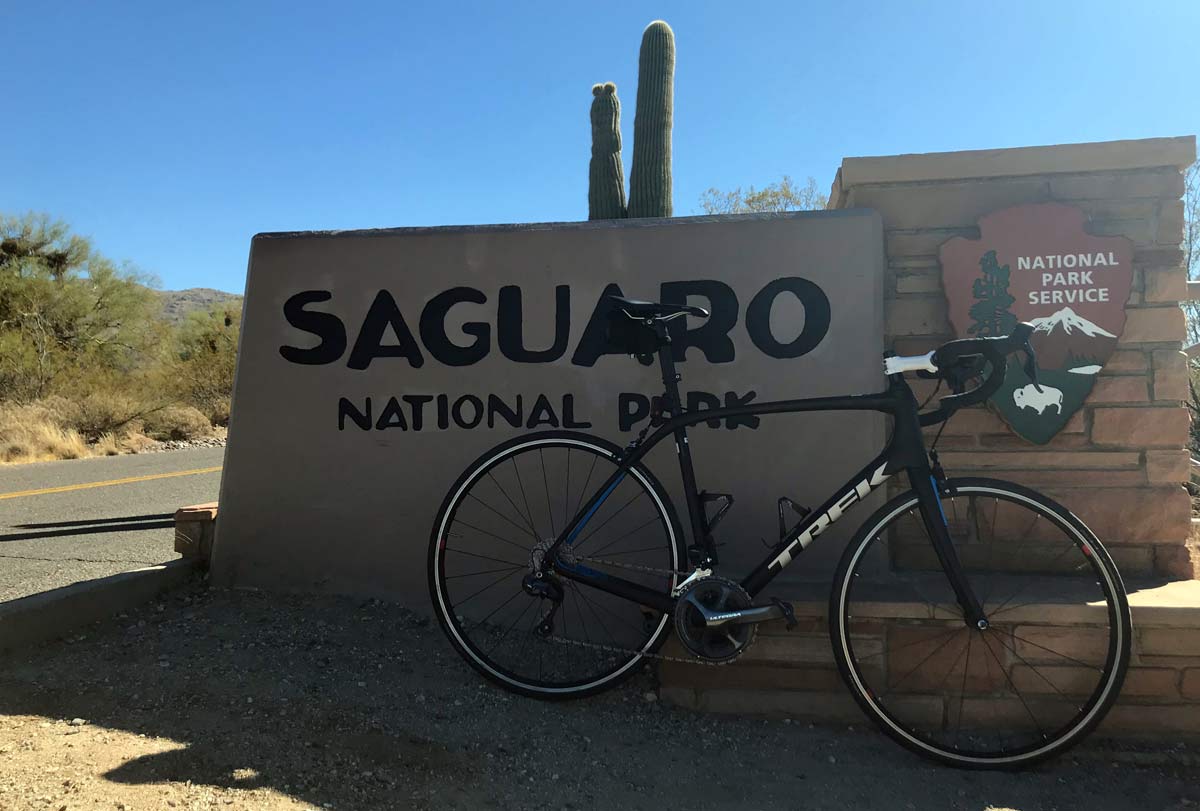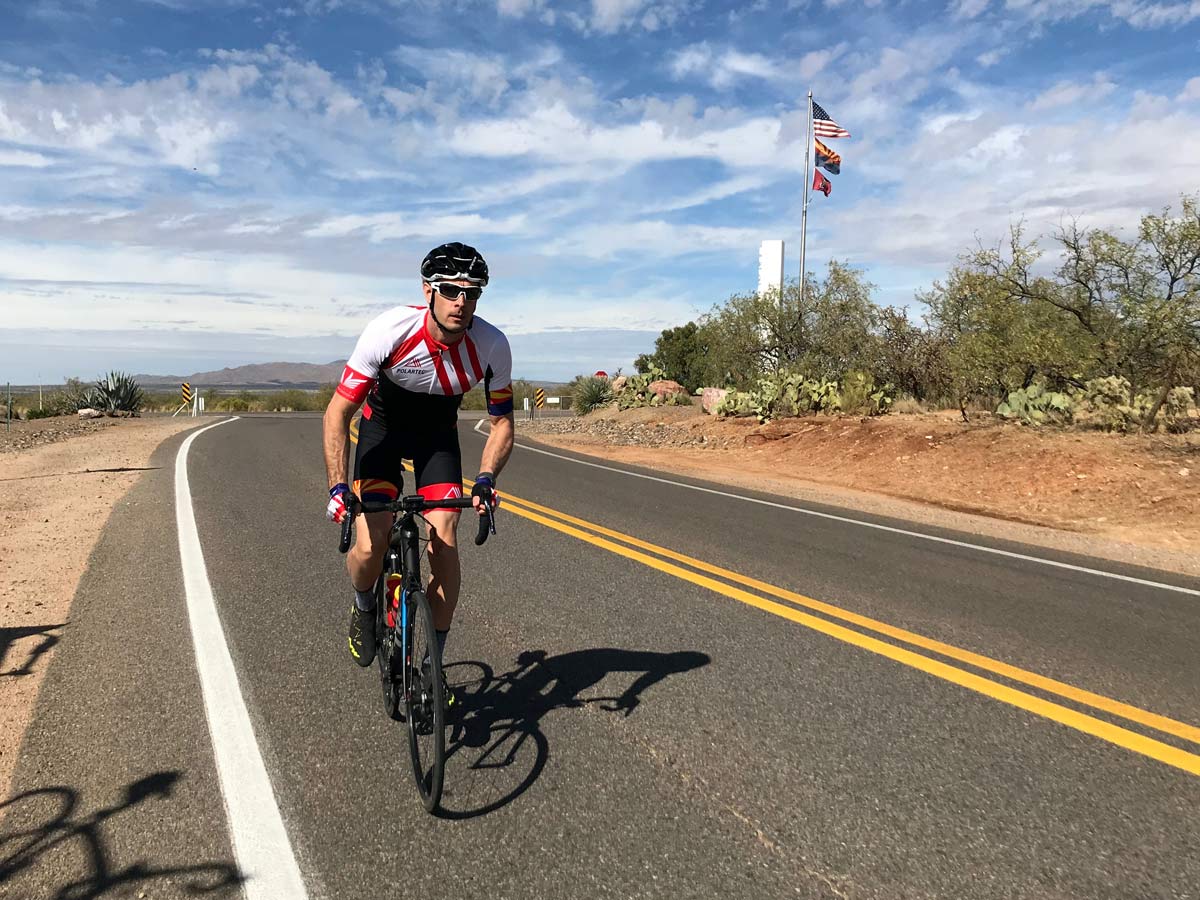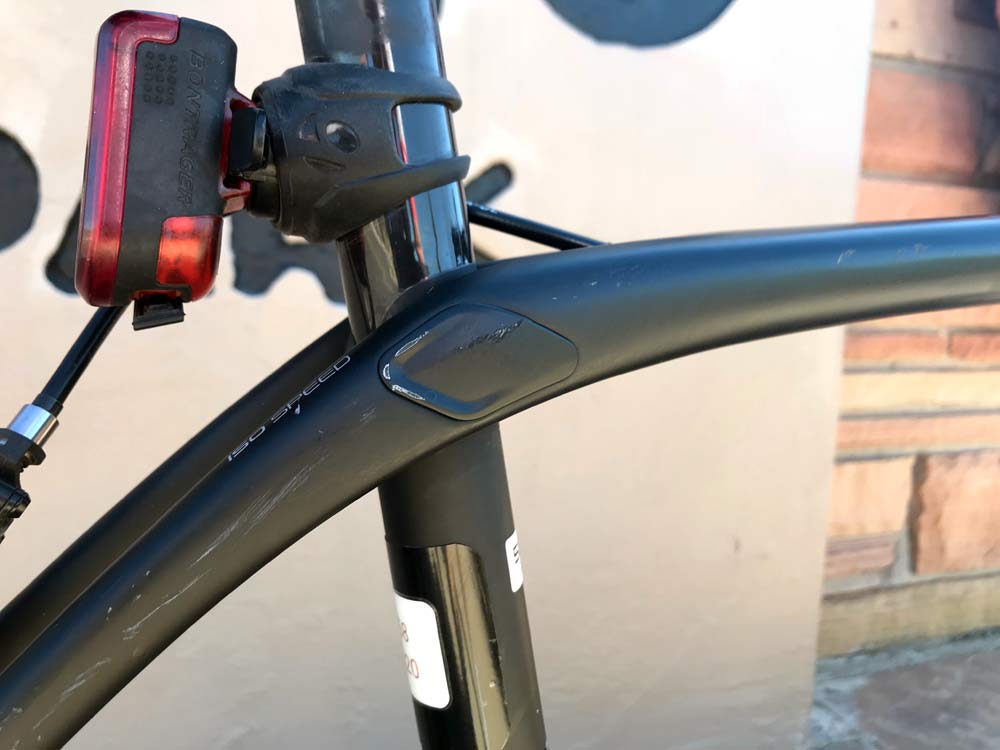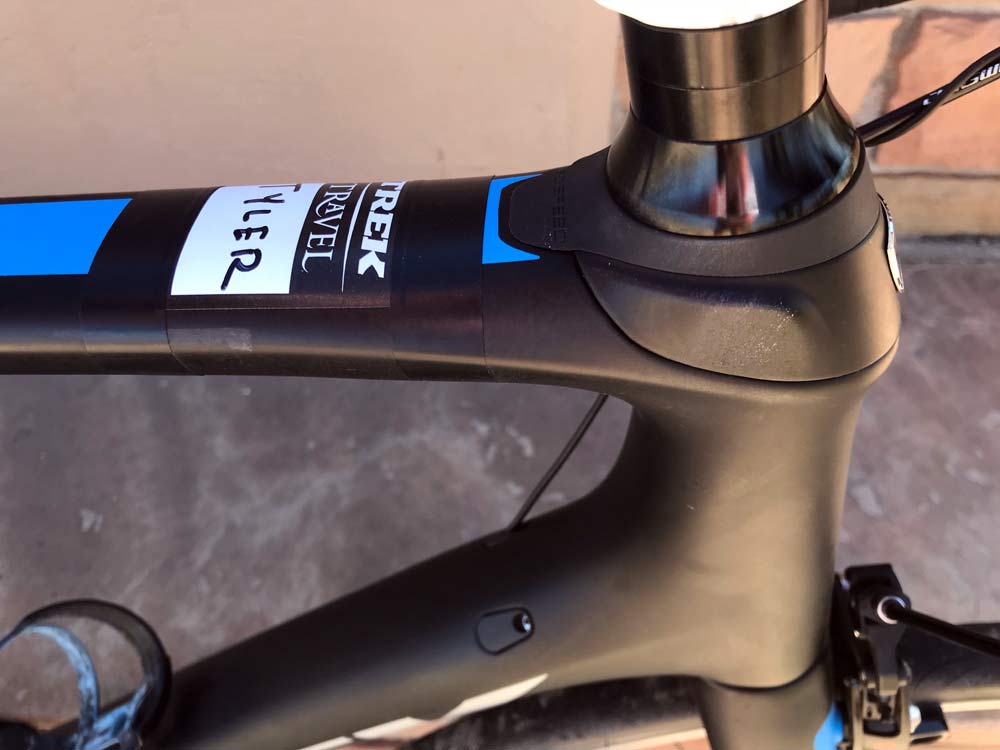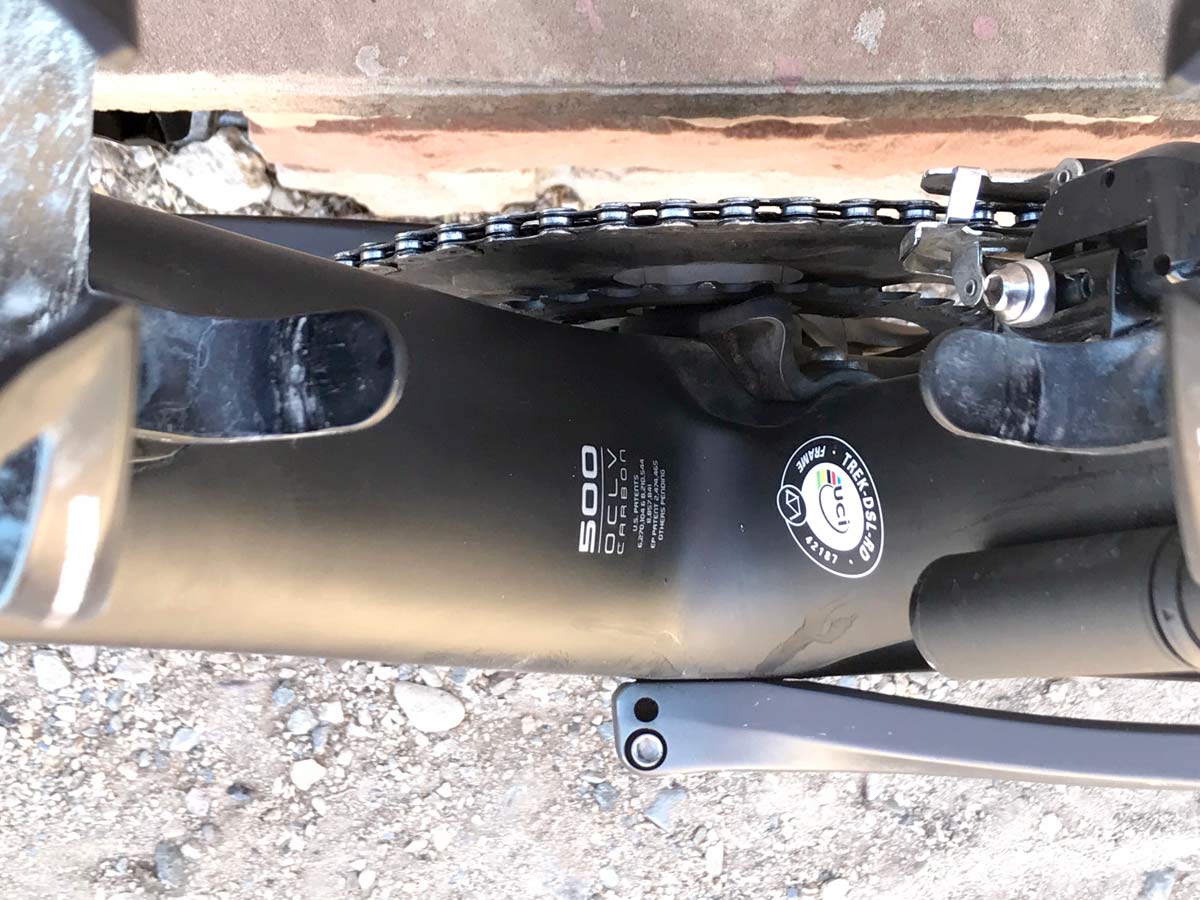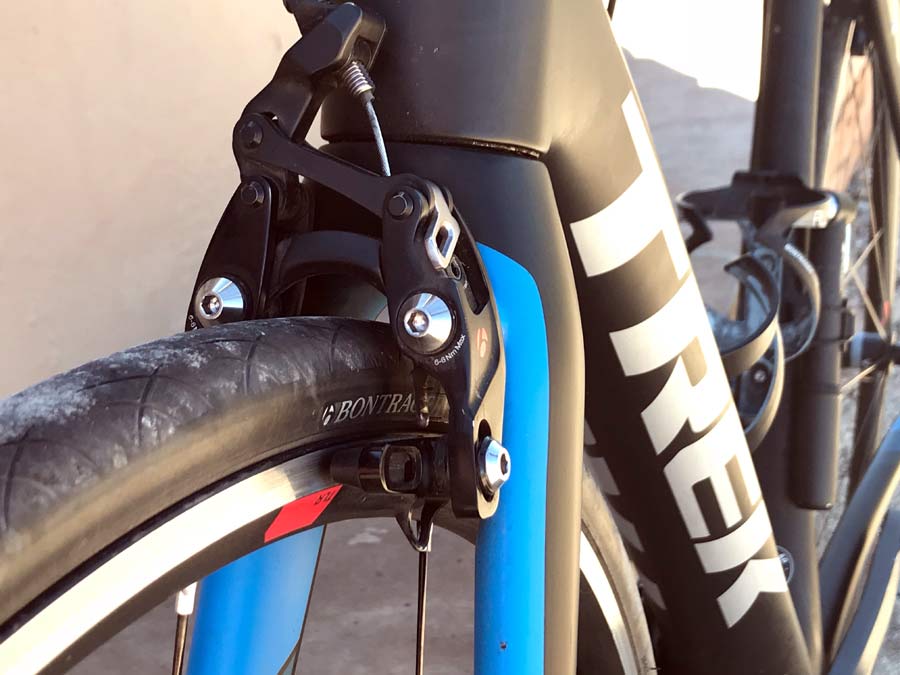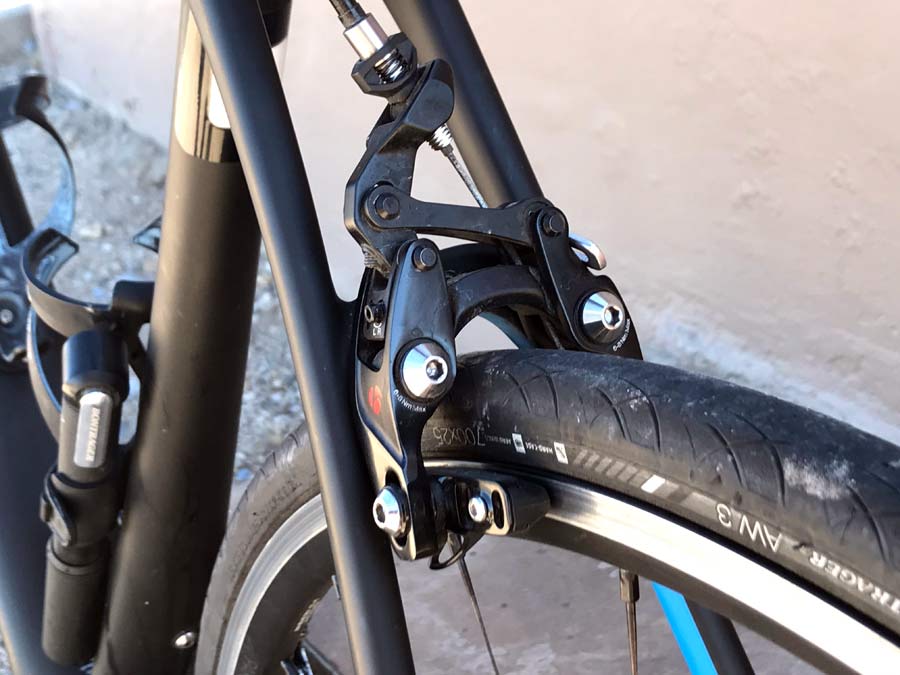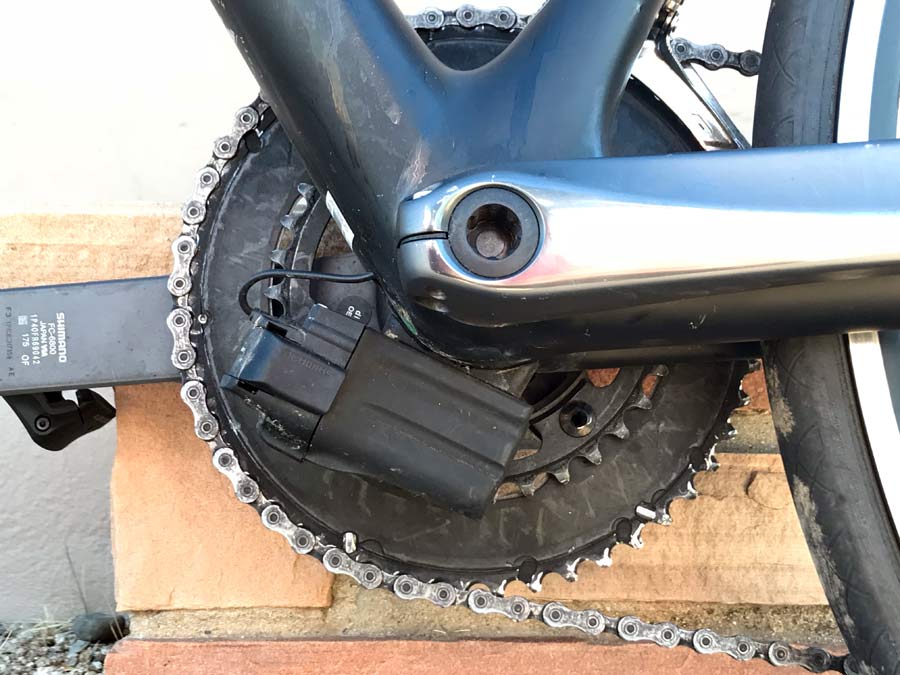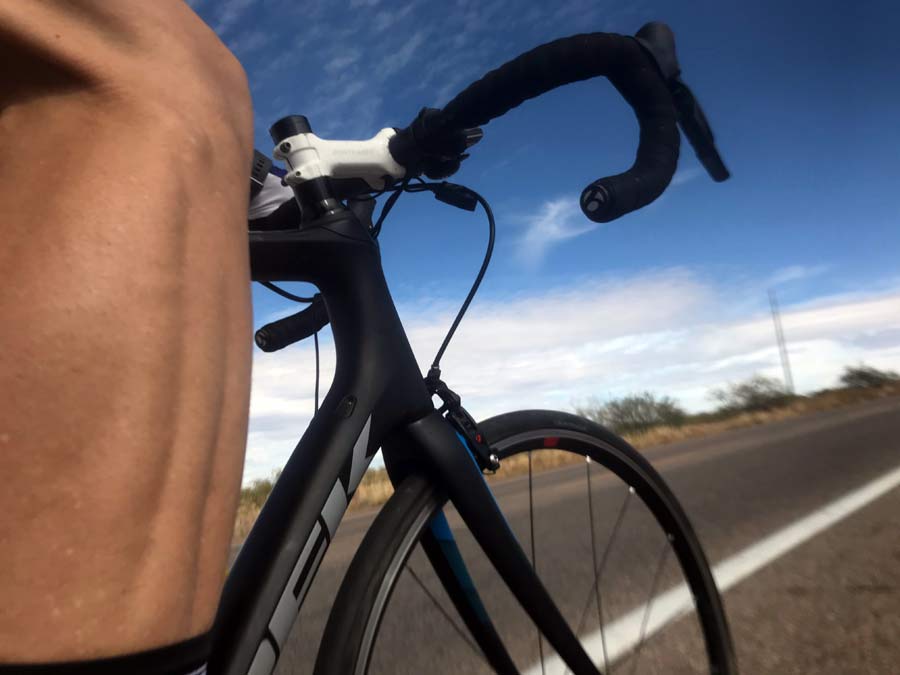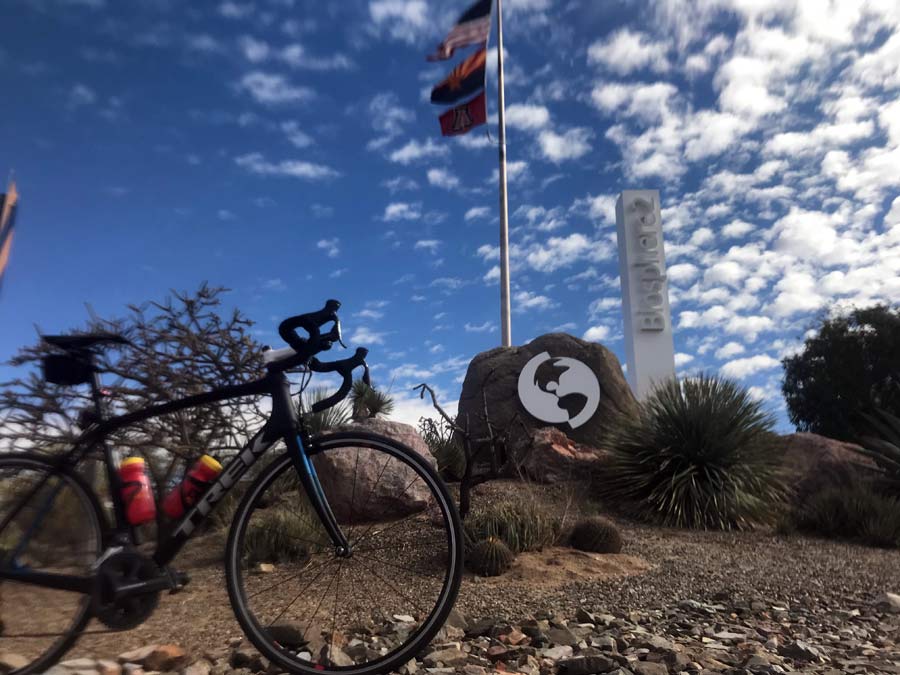First introduced in 2012 as their lightweight, high performance endurance road bike, the Trek Domane has seen the usual carbon layup improvements. In 2016, it underwent major structural changes with the SLR model that introduced their IsoSpeed Decoupler to the front of the bike, too, as well as an adjustable IsoSpeed for the seat tube. The front IsoSpeed has made its way to the SL models, too, which keep the standard, non-adjustable rear IsoSpeed system. That system is simpler and lighter, and that’s what we’re reviewing here.
TREK DOMANE SL7 DETAILS
At a recent Polartec fabric launch, we rode with the Alberto Contador Foundation’s development team, which will be racing in a specially developed Polartec kit. Trek Travel supplied the bikes and support vans, giving us an opportunity to put three solid days on the Trek Domane SL7. Yes, the title says one ride review, but it’s really more of a one big weekend review. Over three days, I rode the bike 149 miles with about 10,500 feet of climbing and plenty of cracked, rough pavement and a few short dirt roads. Basically, perfect conditions for testing an endurance bike designed to mute road imperfections.
The original IsoSpeed system places a pivot at the top tube/seat tube junction and uses elastomers the natural flex of the carbon for compliance. The pivot allows the entire seat tube, which extends into a seat mast, to flex like a leaf spring. This provides some cushioning against impacts like potholes, ruts, cobblestones, etc.
Up front, the newer IsoSpeed head tube surrounds the upper headset cup in a elastomer a rocker cup to provide fore-aft flex. The intention is the same, to mute impacts. Check Trek’s IsoSpeed splash page for video and graphics showing how it works.
I found both ends of the bike to work as intended. Up front, it’s a different feel than the Specialized FutureShock or Lauf Grit. Those two designs actually have suspension travel. Trek’s IsoSpeed simply allows more aggressive fork axle deflection. As such, it feels more like (entirely like, actually) a traditional road bike than the other two, but also absorbs less impact than either of those two. None are better than the others in all situations. For pure roadies looking for the lightest and most racy solution, IsoSpeed is (in my opinion) probably the best in that situation.
The rest of the frame is designed to be stiff and efficient, leading out with a very wide downtube and bottom bracket section. A pressfit BB90 takes full advantage of that space, not wasting anything with external cups. On the driveside, an integrated chain keeper prevents the chain from dropping off the small ring on really bumpy terrain.
Spec on the Domane SL7 includes their direct-mount Bontrager Speed Stop rim brakes, which worked very well and will clear up to a 28mm tire. Standard wheel spec on the SL7 are the Bontrager Aeolus Pro3 tubeless ready carbon clinchers, but our group of bikes stuck with alloy wheels (likely a cost consideration given the size of the fleet Trek Travel needs).
Hidden under the downtube’s water bottle cage is a compartment for internal Di2 battery mounting. Our fleet bikes had external batteries to simplify bulk charging, but this is NOT the stock placement. The SL7 comes with a full Shimano Ultegra Di2 group, right down to the chain.
TREK DOMANE SL7 RIDE REVIEW
My time on the bike included a couple laps around Saguaro National Park (which is amazingly beautiful…and a really fun loop!), the monstrous climb known as Mt. Lemmon, and a ride from the edge of Tucson out to the Biosphere 2.
While the pavement inside the park and most of the big climb were smooth and enjoyable, the riding to all three day’s destinations carried us across some very poorly maintained asphalt. Cracks big and small, divots and expansion gaps kept us on our toes. They also highlighted the Domane’s ability to mute them. I was running slightly higher tire pressure than normal to reduce the chances of a pinch flat, so the IsoSpeed was all that was saving me from discomfort.
In my opinion, the system isn’t so much designed for vibration reduction (that’s where good tire, tire pressure and cockpit selection comes in), but mainly for impact mitigation. Bumps were partially defeated, and crummy roads had their edges dulled. The Domane was originally designed for the spring classics’ and their ever present cobbles. Considering my “cobbles” are less like Paris-Roubaix and more like the incessant cracks and gaps of Tucson’s city roads, the Domane is equally adept at smoothing our daily “classics”.
The rest of the bike performed as expected of a modern high end carbon road bike. Power delivery was direct and efficient. Even with the fleet’s pre-installed saddle bag, tail light and mini pump, plus two full water bottles and my own GPS cycling computer mounted, it never felt heavy. With a retail of $4,999 for the stock bike (with carbon wheels), or about $1,540 for the frameset, it’s a well priced package for a bike that’ll carry you comfortably through fast paced miles. (Worth nothing, there are 2017 bikes and framesets on sale that are very similarly spec’d. And, it being Trek, there are disc brake versions, too, and price points to suit everyone. They even have alloy Domane bikes, and gravel-ish builds, too.)
